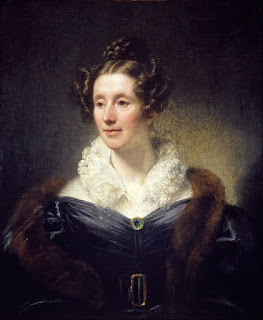This episode is about some of the interesting connections that arise in science.
We’ll start with me and my first professional job as a
mineralogist analyzing kidney stones. My mineralogy professor at Indiana
University, Carl Beck, died unexpectedly, and his wife asked me as his only
grad student to carry on his business performing analysis of kidney stones. Beck
had pioneered the idea of crystallographic examination to determine mineralogy
of these compounds because traditional chemical analysis was misleading. For example,
some common kidney stones are chemically calcium phosphates and calcium
carbonates – but they are hardly ever calcium carbonate minerals. That makes a
big difference in terms of treatment, because calcium carbonate minerals can be
dissolved with acids, while calcium phosphate cannot. The carbonate is actually
part of the phosphate mineral structure, partially substituting for some of the
phosphate. Other subtleties of mineral crystallography can distinguish between different
minerals and can point to specific kinds of treatments, more than just
chemistry can.
One of the most common minerals in kidney stones is called
whewellite – calcium oxalate, CaC2O4 with a water molecule as part of its structure.
In kidney stones it usually forms little rounded blobs, but sometimes the way
the mineral grows, it makes pointy little things called jackstones, for their
similarity to children’s’ jacks. And yes, those can be awfully painful, or so I’m
told. Whewellite is really rare in the
natural world beyond the urinary system, but it does exist, especially in
organic deposits like coal beds. Whewellite was named for William Whewell,
spelled Whewell, a true polymath and philosopher at Cambridge University in
England during the first half of the 19th century. He won the Royal
Medal for his work on ocean tides and published studies on astronomy,
economics, physics, and geology, and was a professor of mineralogy as well.
 |
| Mary Somerville, 1834 painting by Thomas Phillips - source |
In 1834 Somerville published “On the Connexion of the
Physical Sciences,” a synthesis reporting the latest scientific advances in
astronomy, physics, chemistry, botany, and geology. William Whewell wrote a
review in which he coined the word scientist for Somerville, not simply to
invent a gender-neutral term analogous to “artist,” but specifically to recognize
the interdisciplinary nature of her work. And even more, according to Somerville’s
biographer Kathryn Neeley, Whewell wanted a word that actively celebrated “the
peculiar illumination of the female mind: the ability to synthesize separate
fields into a single discipline.” That was what he meant by a scientist.
Somerville was born in Scotland in 1780 and died in 1872 at
age 91. Her legacy ranges from a college, an island, and a lunar crater named
for her to her appearance on Scottish bank notes beginning in 2017. Besides the
mineral whewellite, William Whewell is also memorialized in a lunar crater and
buildings on the Cambridge campus, as well as in the word scientist, included
in the Oxford English Dictionary in 1834, the same year he coined it. He died
in 1866.
—Richard I. Gibson
LINK:

No comments:
Post a Comment